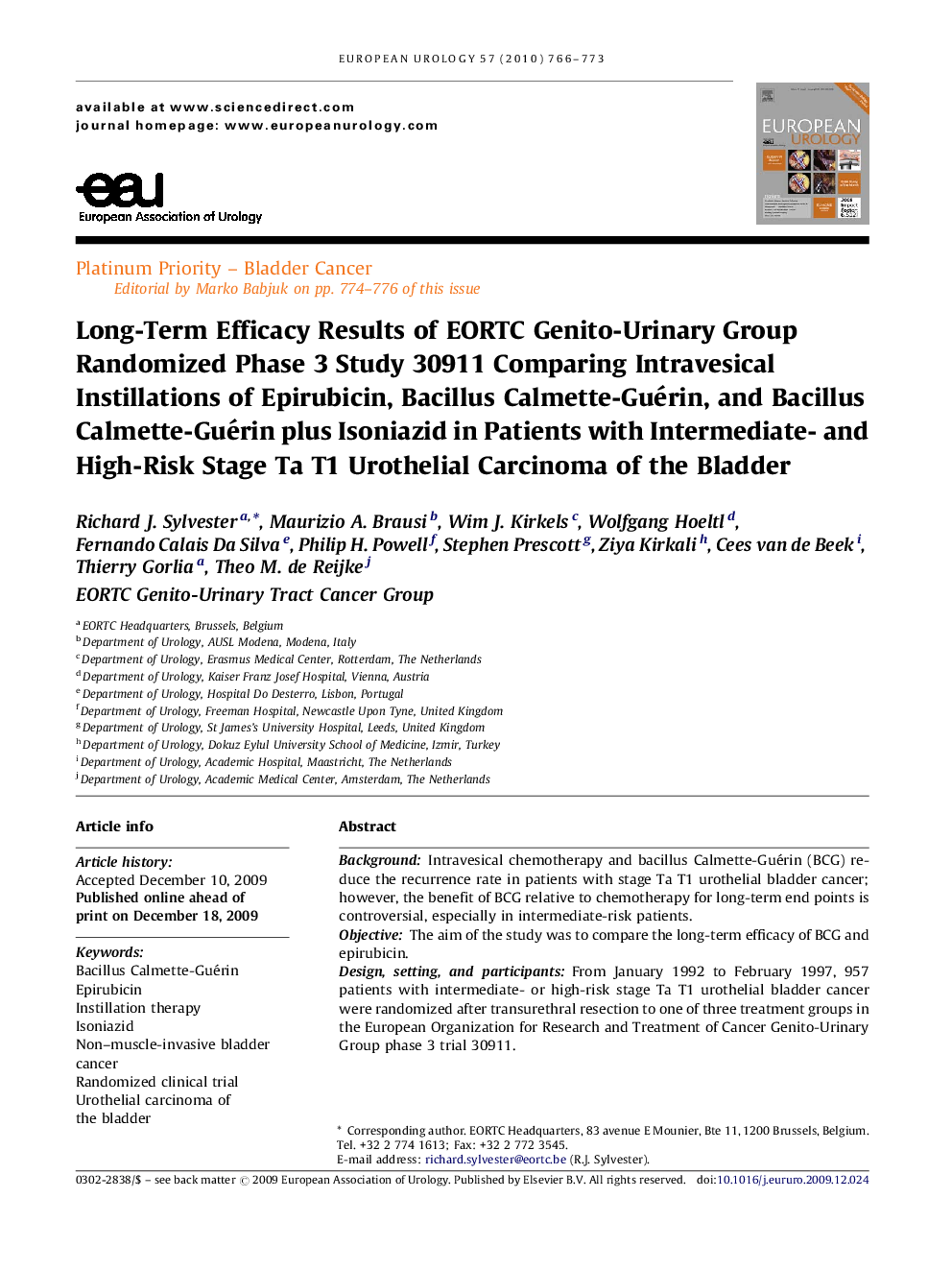| کد مقاله | کد نشریه | سال انتشار | مقاله انگلیسی | نسخه تمام متن |
|---|---|---|---|---|
| 3927980 | 1253192 | 2010 | 8 صفحه PDF | دانلود رایگان |

BackgroundIntravesical chemotherapy and bacillus Calmette-Guérin (BCG) reduce the recurrence rate in patients with stage Ta T1 urothelial bladder cancer; however, the benefit of BCG relative to chemotherapy for long-term end points is controversial, especially in intermediate-risk patients.ObjectiveThe aim of the study was to compare the long-term efficacy of BCG and epirubicin.Design, setting, and participantsFrom January 1992 to February 1997, 957 patients with intermediate- or high-risk stage Ta T1 urothelial bladder cancer were randomized after transurethral resection to one of three treatment groups in the European Organization for Research and Treatment of Cancer Genito-Urinary Group phase 3 trial 30911.InterventionPatients received six weekly instillations of epirubicin, BCG, or BCG plus isoniazid (INH) followed by three weekly maintenance instillations at months 3, 6, 12, 18, 24, 30, and 36.MeasurementsEnd points were time to recurrence, progression, distant metastases, overall survival, and disease-specific survival.Results and limitationsWith 837 eligible patients and a median follow-up of 9.2 yr, time to first recurrence (p < 0.001), distant metastases (p = 0.046), overall survival (p = 0.023), and disease-specific survival (p = 0.026) were significantly longer in the two BCG arms combined as compared with epirubicin; however, there was no difference for progression. Three hundred twenty-three patients with stage T1 or grade 3 tumors were high risk, and the remaining 497 patients were intermediate risk. The observed treatment benefit was at least as large, if not larger, in the intermediate-risk patients compared with the high-risk patients.ConclusionsIn patients with intermediate- and high-risk stage Ta and T1 urothelial bladder cancer, intravesical BCG with or without INH is superior to intravesical epirubicin not only for time to first recurrence but also for time to distant metastases, overall survival, and disease-specific survival. The benefit of BCG is not limited to just high-risk patients; intermediate-risk patients also benefit from BCG.Trial registrationThis study was registered with the US National Cancer Institute clinical trials database [protocol ID: EORTC-30911]. http://www.cancer.gov/search/ViewClinicalTrials.aspx?cdrid=77075&version=HealthProfessional&protocolsearchid=6540260.
Journal: European Urology - Volume 57, Issue 5, May 2010, Pages 766–773